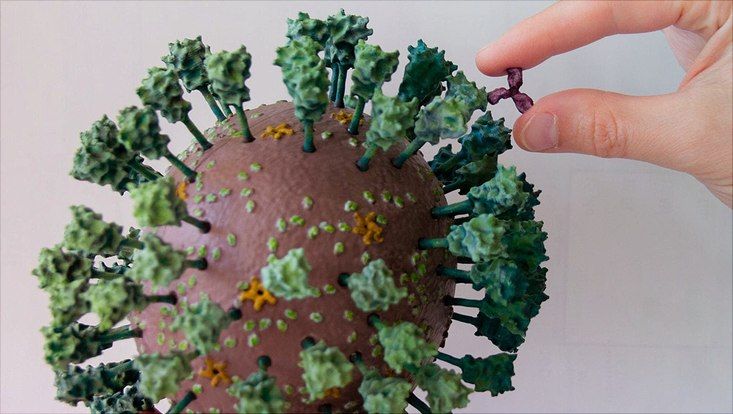Hamburg COVID-19 Serie

MITTWOCH, 10.2.2021 - 16 Uhr
Dr. Andrea Thorn (UHH) spricht über die internationalen Coronavirus Structural Task Force.
Viele Wissenschaftler in der Metropolregion Hamburg sind an der Forschung im Zusammenhang mit SARS-CoV-2 und der COVID-19-Pandemie beteiligt. In Zusammenarbeit mit der Helmholtz-Graduiertenschule für Data Science in Hamburg (DASHH) will der Leibniz ScienceCampus InterACt die Sichtbarkeit dieser Forschung erhöhen und neue Kontakte und mögliche Kooperationen fördern. Deshalb startete am 12. August die neue Hamburger Online-Vorlesungsreihe COVID-19. Die Reihe stellt eine einzigartige Plattform für einen lebendigen Austausch dar und findet alle zwei Wochen mit einem 30 minütigen Vortag statt mit Raum für weitere Diskussionen im Anschluss.
Am Mittwoch, 10. Februar, um 16 Uhr wird Dr. Andrea Thorn (UHH) in ihrem Vortrag die Coronavirus Structural Task Force (https://insidecorona.net/de/) vorstellen und über ihre strukturbiologische Forschung an SARS-CoV-2 sprechen.
Abstract (EN): The Coronavirus Structural Taskforce
As methods developers in structural biology, we usually work far from the spotlight. When the COVID-19 pandemic began, we asked ourselves how we could contribute to the fight against the virus?
As early as February, we started evaluating the structures of macromolecules in SARS-CoV and later SARS-VoV-2 available from the Protein Data Bank and found many could be improved. We set up a website (www.insidecorona.net) and a database containing our evaluation and revised models; met online every day, working on an automatic structure evaluation and revising individual structures. We also engaged in outreach activities, writing blog posts about the structural biology of SARS-CoV-2 aimed at both the scientific community and the general public, refining structures live on Twitch and offering a 3D printable virus model for schools.
In the beginning, there were no tenured academics in the Coronavirus Structural Task Force [1]; we were an ad hoc collaboration of mostly junior researchers across nine time zones, brought together by the desire to fight the pandemic. We lacked management experience, computing facilities and administrative infrastructure. Still, we were able to rapidly establish a large network of COVID-19 related research, forge friendships and collaborations across national boundaries, spread knowledge about the structural biology of the virus and provide improved models for in-silico drug discovery projects. We may have gotten into the spotlight after all.
[1] Croll, T., Diederichs, K., Fischer, F., Fyfe, C., Gao, Y., Horrell, S., Joseph, A. P., Kandler, L., Kippes, O., Kirsten, F., Müller, K., Nolte, K., Payne, A., Reeves, M. G., Richardson, J., Santoni, G., Stäb, S., Tronrud, D., Williams, C. & Thorn, A. (2020). BioRxiv. doi:10.1101/2020.10.07.307546.
Für weitere Informationen nehmen Sie gerne Kontakt mit uns auf oder abbonieren Sie unsere Mailingliste via https://bit.ly/3grlxxz.